
I trust in nature for the stable laws of beauty and utility. Spring shall plant and autumn garner to the end of time. — Robert Browning
It's been raining all over ever since the year started.
Nothing dramatic, it's just the typical cold and rainy days that normally extend to February.
Based on old superstitions in our village, if it is sunny on the 1st of January, then the year will mostly have a fair weather. But if it rains, then it will be rainy the whole year.
I don't see that as true anymore, given the crazy weather patterns in the last three years. Even with the vast amount of historical data, it's been quite hard for data scientists to accurately and consistently predict whether.
While numerical data can come off as the truth, there are just too many factors that can either cause bias or error when analyzing data.
Maybe we're just doing it wrong?
"Oh, no. Don't believe that," people at the speed of science would say.
For centuries, or maybe millennia, our ancestors had ridden the elements of nature and discovered interesting patterns that helped them thrive and multiply.
The nuances of life and nature that can help humanity thrive can be overlooked, especially when we have touched the text books, people suddenly become knowledgeable, but no longer wise. Maybe too much knowledge can harm the nature of humans if misused.
Right now, people are dying with hunger and poverty with no opportunities and ideas on how to start gardening or homesteading leading to an abundant and sustainable life. It is like the reverse of what our ancestors have done.
Countryside Life and the Weather

As an agricultural village, our locals are keen with the weather. As I discovered just recently, there's really no regular date as to when to start a cropping season.
Farmers just ride the weather.
Since water is very important in agriculture, our local farmers begin when there is water.
Last December 2022, it was the perfect time for them. The fields had been resting for several weeks already, so when the rainy days came, farmers started employing labor to prepare the fields. In some areas, it starts with carabaos loosening the soil and then flooding the fields to soften it, but since we have enough rainy days, the tractors begin churning the soil to put back all rice stalks and weeds underground and underwater.
The fields rest again before the flooded fields are tractored again to further soften the soil. As soon as this completes, the farmers would then build a seed bed inside the fields to sprout the Binhi or rice seeds, usually it takes 13 baros or 80 kilograms of good seeds for each hectare. Nets should be used to fence the seed bed especially when there are loose farm animals that can potentially harm the sprouts. Farmers are keen at this stage, to make sure the rice sprouts don't get dried up or overly flooded.
In December 27 of last year, my Mama employed labor to transplant the Gani or rice sprouts to the rice fields. It was a tedious job, based on experience, but luckily the rainy weather can be a treat for workers.
As of today, many farmers had also completed transplanting rice to theor fields. Depending on the variety, the rice harvest should begin in March, but can extend until May, perfect when the dry season begins.
In between soil preparation to rice milling, there is too many activities and expenses that happen. Depending on efficiency and land area, total costs can range between 0.027 to 0.0652 USD per square meter. Usually, the larger the land, the more optimal operations and expenses become.
Garden Updates and Harvests
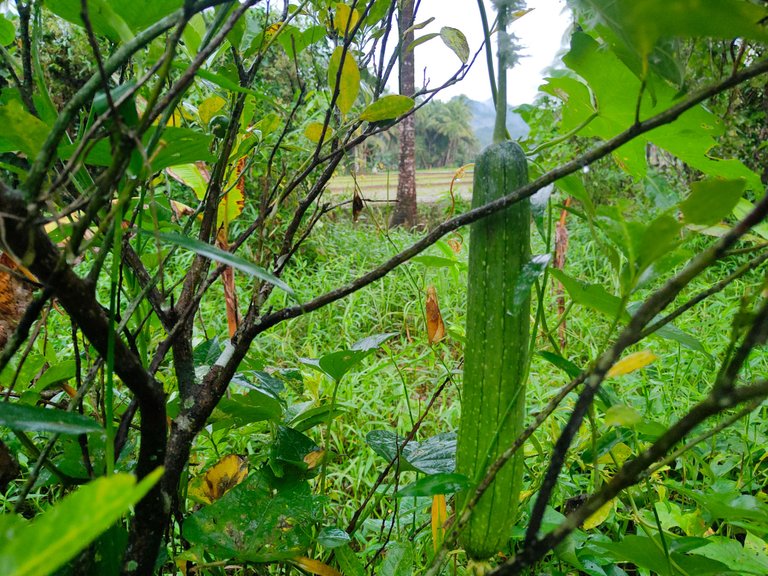
Since the year started, I have added more kangkong, taros, and sweet potatoes in the food forest. Upland kankong is very low-maintenance, but can be invasive when accidentally introduced to bodies of water, so be careful and check your local laws and rules first.
I also propagated more Taros including the Pinalaw (yellow, starchy) and Tapuy (purple) varieties. Taros are also low maintenance and can reproduce almost indefinitely through arrows that crawl on the ground. Upland taros can take longer time to grow tubers while taros grow in flooded areas can grow tubers faster.
As for the sweet potatoes, I added an unknown variety that I found in a vacant lot in the neighborhood. It is mainly used as a leafy vegetable instead of a root crop. Also, I transplated more slips that grew from the sweet potato seed that I grown in the raised beds.
The new Luffa started bearing more fruits even with the continuous rain while the bean vines had started climbing om the bamboo trellises.
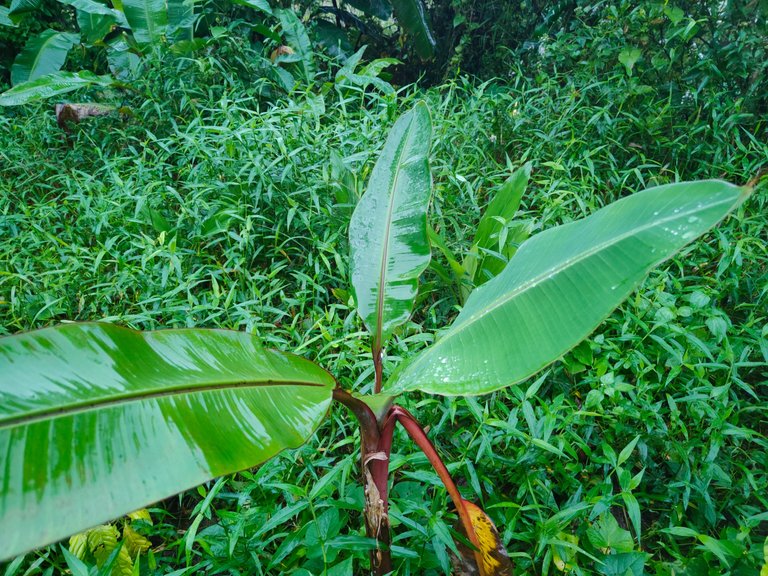
Due to the rainfall, weeds grew incessantly and overpowered many of the shorter bananas and other fruit tree seedlings. I needed to clear the bases, so the weeds don't compete with its growth.
On each visit, I always bring something to grow, so that in the next few months it will help bring abundance and sustainability even with the socio-economic after-effects of our global state-leaders' delusional mandates policies.
Visiting the food forest is helping me manage our food bills, since I'm able to forage and harvest vegetables for our daily meals. It is not enough to serve a family of six, but it's better than wholly depending on crazy, expensive items found in groceries and the market.
Have you started gardening too?
PINNED POSTS
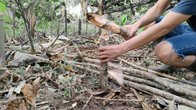 | A Sustainability Review of the Year 2022 Starting from January, let's have a trip down the highlights of my journey in self-sufficiency and sustainability. |
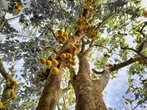 | Clearing the Damage After the Storm Instead of falling into anxiety, I took time to make use of what the storm had given. |
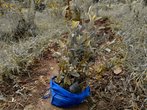 | Building Abundance with More Fruit Trees Amid the Economic Turmoil This year, I planned to initially plant 100 trees wherever possible until the year ends. |
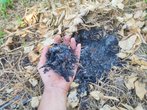 | Using Saltwater and Fire to Heal a Permaculture Garden Plant debris becomes natural mulch and organic matter. |
 | Harvesting Cucumbers After a Year of Labor As crops mature, harvest season began as well. |
 | Fermenting Fish Amino Acid for the Garden Crops It would be a sin to throw away such things, even the food scraps I turn it to compost now. |

About Me
@oniemaniego is a software developer, but outside work, he experiments in the kitchen, writes poetry and fiction, paints his heart out, or toils under the hot sun.
 | Onie Maniego / Loy Bukid was born in rural Leyte. He often visits his family orchards during the summers and weekends, which greatly influenced his works. |

Support with Crypto
Bitcoin 34hdQNHHFUodqegi2wwNeNw2p35ewvnaXQ
Ethereum 0xd36126ab2463c3404cca1c97d8f3337917dfd113
Not yet on Hive? Earn while blogging.
Sign up with PeakD | Ecency







Thank you for sharing this post on HIVE!
Your content got selected by our fellow curator rezoanulvibes & you just received a little thank you upvote from us for your great work! Your post will be featured in one of our recurring compilations which are aiming to offer you a stage to widen your audience within the DIY scene of Hive. Stay creative & HIVE ON!
Please vote for our hive witness <3
Congratulations, your post has been added to Pinmapple! 🎉🥳🍍
Did you know you have your own profile map?
And every post has their own map too!
Want to have your post on the map too?